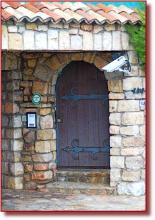![]()
![]()
![]()
![]()
![]()
![]()
![]()
![]()
![]()
![]()
![]()
![]()
![]()
![]()
![]()
![]()
![]()
![]()
![]()
![]()
![]()
![]()
![]()
![]()
![]()
![]()
![]()
![]()
![]()
![]()
![]()
![]()
![]()
![]()
![]()
![]()
![]()
![]()
![]()
![]()
IMPORTANT: No material may be reproduced, copied or redistributed from this site, without the express written consent of doktorjon.co.uk
All the detailed information on this site is provided in good faith; and as such, Doktor Jon does not accept responsibility for any consequential loss, injury or disadvantage resulting from any individual or organisation acting on the details contained herein.
© doktorjon.com 2004 - 2010
![]()
CCTV in Houses, Bungalows and Chalets etc.
If you look at the needs for a single occupancy dwelling, such as a detached or semi detached house, the level of risk will mostly be dictated by the location.
With all the necessary additional security measures in place, the main consideration for using CCTV effectively, is generally the siting of cameras and the correct provision of lighting.
So what exactly do you need to think about before deciding on the correct type of camera, and the ideal location to install it.
Please Note - Doktor Jon is currently upgrading his site, so you may see some layout changes on various pages, whilst the work is in progress.
Hopefully, the complete re-design and improvements, should be completed by early 2010.
Will there be enough light at night; if not, either install low level even lighting around the property (this can be movement activated or constantly on), or if additional lighting is likely to annoy the neighbours, you can think about using covert Infra Red (IR) illumination, with an appropriately set up Black and White camera.
Generally speaking, dedicated colour cameras do not work with Infra Red (IR) lighting at night.
There are now a number of cameras that can produce a switched colour image by day (unfortunately some of the cheaper offerings are rather poor quality), and a monochrome (B&W) picture at night using Infra Red light. These cameras are much more expensive than normal models, and those which have the IR illumination built in, are often only suitable for short range viewing. (more detailed advice on IR lighting is available in the Infra Red section).
One useful technique for monitoring the outside of a property, is to locate the camera away from the building, so that it's looking back from a distance.
The camera will need to be connected to a suitable power supply (12v DC preferred for safety reasons), and video cable, both of which can be linked back (discreetly) to the house. If power is available, but it is difficult to install a suitable video cable, you could consider using a low power microwave wireless transmitter (be aware though that if your neighbours are within 310' or 100 metres and are using the same [or similar] receiver, they could also pick up your pictures).
This covert approach, is not intended to provide a deterrent effect, but rather offer the best possible view of the outside of the property. If a deterrent effect is thought appropriate, a suitably configured dummy camera or housing, can be placed within the area being monitored, and if anyone attempts to disable the visible 'CCTV camera' they will be caught on the hidden unit.
A number of 'domestic' cameras also have a small microphone built in, so with the correct cable (or transmitter), you can also hear what is going on, but be aware, the mic. is generally useless if the camera is fitted into a sealed protective weather resistant housing, or located inside a window looking out. Ambient background noise can also cause problems in certain places.
Using the remote location technique, the camera can easily be secreted in a garden shed, detached garage, greenhouse, or even a statue!, although to be really successful, you should ideally use a proper industrial grade CCTV camera with interchangeable lenses, rather than a basic inflexible 'Domestic' model. It's also worth mentioning that the camera should be kept fairly low to the ground, perhaps 1 - 3 metres high, given that the higher it's mounted, the less efficient it becomes.
More information on using CCTV in individual dwellings >>>







